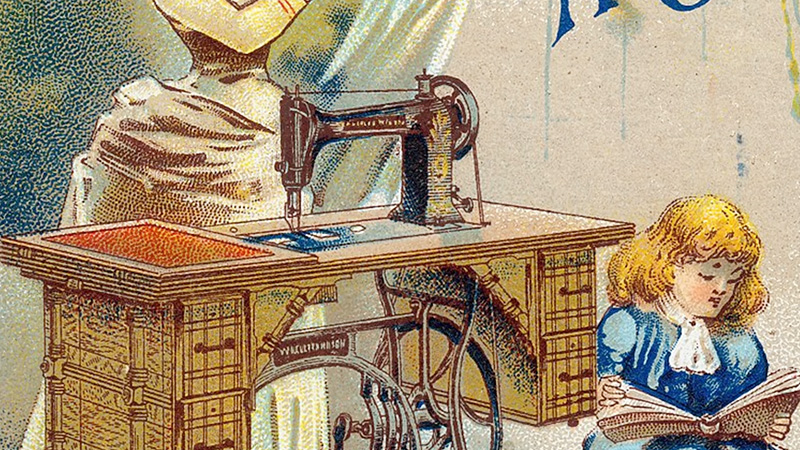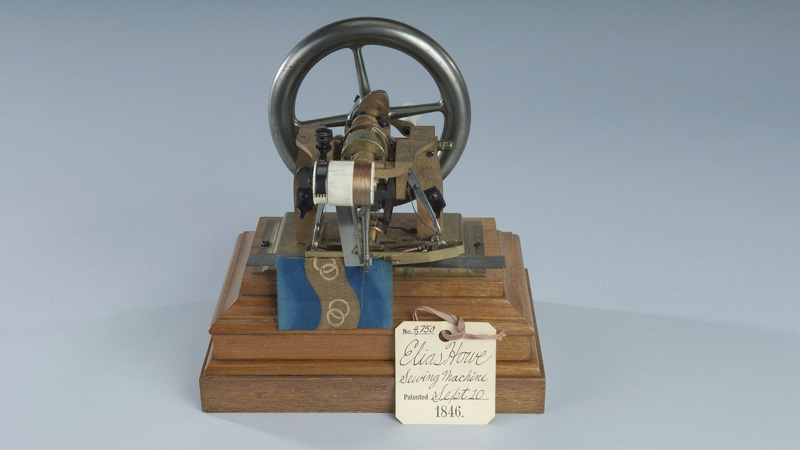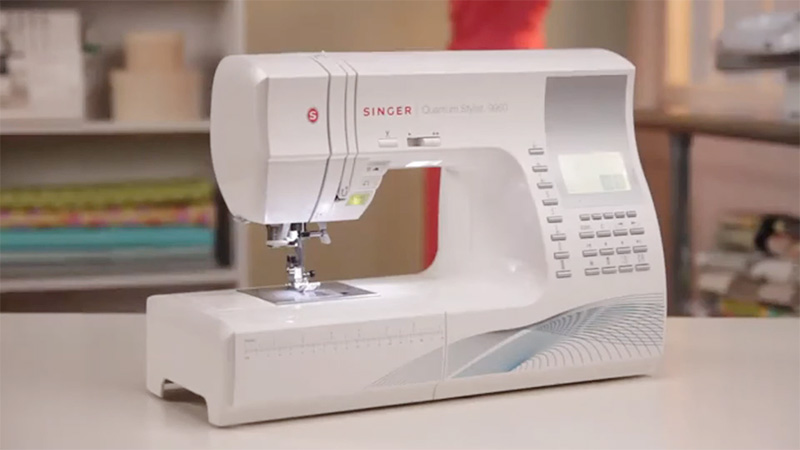We have come a long way with the remarkable art of sewing. But have we ever thought of the history of the sewing machine? The device that actually helps us to connect the beautiful threads.
It’s evident that modern sewing machines have gone through revolutionary changes to reach this point. But let’s not forget to brace the old-style machine models that led the way for us.
That’s why, we think before you completely shift your sewing career, it’s important to learn more about the development phases of your sewing machine.
Today, we will explore the history of the sewing machine, from its early beginnings to the digital machines we use today.

History of the Sewing Machine
It was not long ago! The time of early sewing machines started in 1830 (We’ll come back to it later). Automating the sewing process with the help of a machine was recently developed.
However, the idea of sewing by hand dates back thousands of years. Archeologists believe, based on their discovery, that bone needles and awls contributed to the basics of stitching.
Archaic humans used needles made from bird’s bone. Evidence suggests the existence of such hands was over 50,000 years ago. It was found in the Denisova Cave.
Later, a bone needle from the Aurignacian period (47,000 to 41,000 years ago) was discovered at Potok Cave in Slovenia’s Eastern Karavanke.
It continued for more than 10,000 – 20,000 years. Bone and ivory needles found in Xiaogushan prehistoric sites in Liaoning proved their existence. Ref: Wikipedia
From around 4400 BC to 3000 BC, copper sewing needles were popularly used in the Middle East. And, around the third century BC, finally sewing needles made of iron came to light!
This was history in brief about the sewing needles. But when was the concept of a sewing machine brought to life? Let’s keep reading and find out.
The First Patent of Sewing Machine

By 1755, sewing became popular. And it became a mandatory skill in every household.
A German physician and inventor Charles Weisenthal received the first known patent for a mechanical device. The goal was to assist in sewing. It had a double-pointed needle with an eye at the other end.
You may think, Charles Weisenthal was the one who invented the first sewing machine. But that was not the case. Moreover, this early machine was never built or widely adopted.
A Little More Ahead of Time
The industrial revolution started in the early 19th century. During this time, many creative minds stepped ahead in order to invent sewing machines.
It was French tailor Barthelemy Thimonnier, who mostly earned the credit to develop the first functional sewing machine by hand in 1830. Thimonnier’s machine used a hooked needle and was highly appropriate for making military uniforms.
He received a patent for his invention, but his factory was destroyed by angry Parisian tailors. They feared they would lose their jobs due to automation. Sigh!
The Progress of Sewing Machines in America
When it’s about the Americans, Walter Hunt, an American mechanical engineer, designed a sewing machine in 1834. He was not limited to sewing machines only.
His popular inventions were genuinely household items including the fountain pen, a new rifle, a knife sharpener, a flax spinner, and an ice plough.
It’s funny nobody really knows why but he never patented the sewing machine. And that’s why his journey with the sewing machine stopped right there.
Later in 1845, Elias Howe, an American inventor, developed a sewing machine with a lockstitch mechanism. His invention of the sewing machine was a significant improvement in the industry of tailoring.
However, the development of this sewing machine experienced skepticism and legal challenges. Eventually, Howe’s patent was upheld, and he established a successful sewing machine company.
Modern Sewing Machines

By the late 19th century, sewing machines were becoming more common in homes. The White Sewing Machine Company was founded in 1866.
They started producing sewing machines on a large scale for domestic use. The locals praised their machines for additional durability and sustainability.
In the first half of the 20th century (1900-1949), manual hand-cranked sewing machines soon started getting replaced by electricity-driven machines. Once it happened, there was no going back!
Eventually, the age of modern and digital sewing machines arrived. Between 1950 and 2000, sewing machines became widely popular. The functions started to become automatic with a wide range of options for more patterns and styles.
It gradually served the needs of different industries including garments, textiles, and fabrics. Other hobbyists and professional sewers also started to use these machines to a great extent.
Eventually, more variety arrived. Modern machines now have embroidery machines, sergers (overlock machines), and quilting machines so that your taste to explore the sewing art never ends!
Modern Sewing Machine Companies
Gradually, people and industrials became more interested in investing in the sewing machines. Now a reputed number of sewing machine companies saw the light of the day. They are,
- Singer
- Brother
- Juki
- Bernina
- Janome
- Viking
- Pfaff
- Husqvarna
- Elna
- Toyota
- Jaguar
- Baby Lock
Hence, if you are planning to buy a new sewing machine and have no idea where to begin, you can check out any of the products from these brands. They make quality products and also offer non-stop support including official warranty and guarantee.
Final Words
Here ends our article on the history of the sewing machine. We believe, now you know where our sewing machines come from. Even if it’s not mandatory for your sewing lessons, it’s not so bad to learn the origin of your device.
Plus, it’s never a bad deal to learn more! Do you like our article? Let us know in the comment section, before reading our article how much you knew about the history of sewing machines. We can talk and discover more!
Also, please share our article with your friends and let them know about us. It will help us grow and help you learn more about sewing.
Leave a Reply